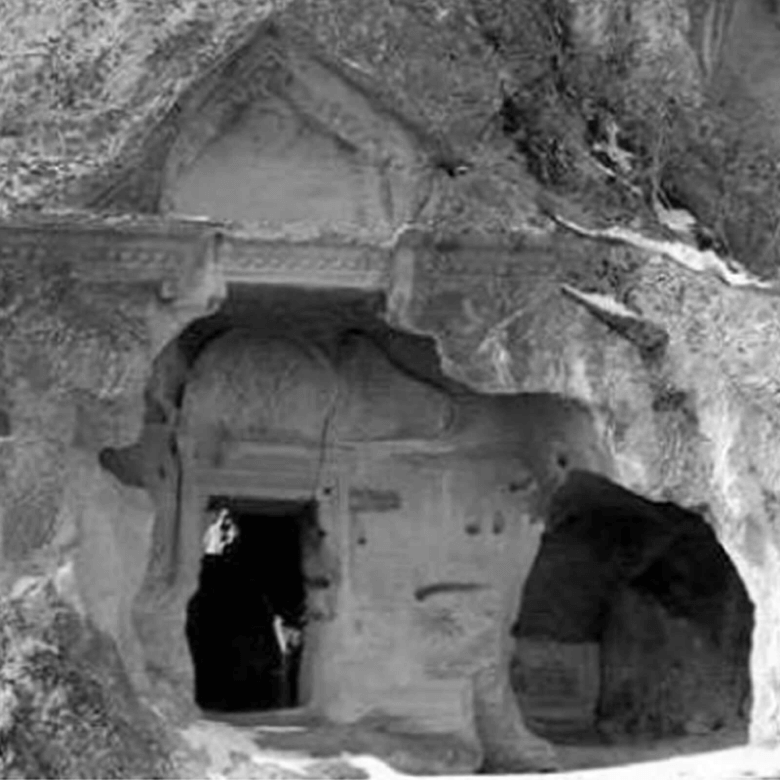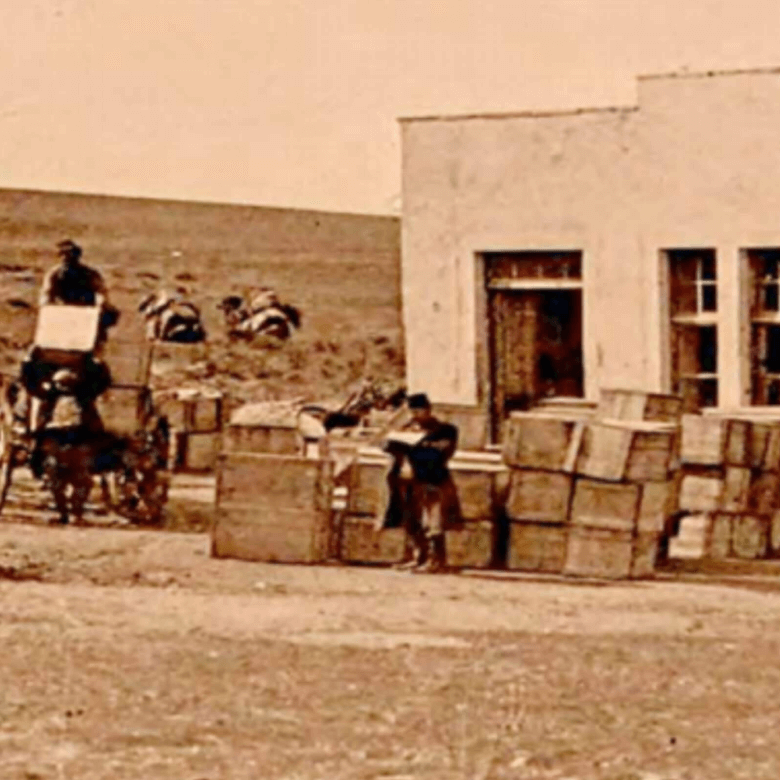From Specialist Dilek ÇOBAN
Do Not Ignore the Role of Natural Resources in the Healthy Development of Children!
An important support that man has received help in every period of his life since his existence is healing waters. Although it is made accessible to everyone by being placed in a small bottle today, its coming and development in our lives is worth learning...
We have compiled the place of healing waters in human life for you from the past to the present...
Mankind has benefited from healing waters since the early ages. In BC 1275, the value of hot water resources in the region where colonies such as Troy and Assos were established was understood. The great historian Herodotus who lived in the B.C. 5th century, gave detailed information about these healing waters used to treat various diseases in his 9-volume ‘Historia’. Hippocrates, the famous physician of the BC period who lived in the 5th century, similarly described the treatment methods with healing waters in his work ‘De Natura Hominis’. In the early Roman Empire, BC 200s, large-scale water distribution networks were built to provide water to thermal health centers and baths. Figeh in Syria, the third largest water source in the world, "Warm water sources" developed by the Romans in the "Bath" region in England and Baden Waters in Germany can be given as examples.
Sources of healing in Anatolian civilizations
The region, which hosts this richness that dates back to BC 8th century, has been called "Healing Phrygia" for ages in Anatolia. The positive effects of baths and healing waters in Gazlıgöl on human health have been the subject of legends and myths. According to a legend, "King Midas of Phrygia has a daughter. One day, the young girl starts to get scars on her face and body. As no one treats this trouble, the king's daughter Suna goes out of her sorrow. Walking around in excruciating pain, she finds healing water in an area near Afyon. This girl, who drinks healing water in the place where there are Gazlıgöl hot spring, relieves all the pain. The girl who stays there for a week heals all her wounds. Suna, who returns to her father, tells King Midas how she healed thanks to this healing water. King Midas immediately builds a bath next to this precious water that comes out of his country. "


“Waterborne Health” in the Roman Empire
In Europe, healing waters are mostly used by Romans. They also established ancient cities in and around Gazlıgöl and maintained the thermal tradition that has been going on since the Phrygians. The small and primitive bath rooms, which were established in the first place, were later replaced by real hot springs. The people sought to cure their diseases in these hot springs. Galen, who lived in Pergamon in ancient Rome and was also considered the world's first sports physician, mentioned the thermal mineral treatment that is still used today in some of his works. In addition, the Romans used hot springs to treat their soldiers due to post-war diseases. In addition, they also evaluated hot groundwater for sports purposes.
Epidemic treatment center in the Middle Ages
After the medieval occupation and attacks, spa centers and mineral waters have lost their attractiveness in Europe for a while. However, in the 14th century, it became fashionable once again with the influence of Andalusian civilization in Spain. By the 18th century, epidemics such as cholera and typhoid, which emerged in the world, became the biggest problem of people. In these periods, unpolluted and reliable natural mineral waters have become the focus again and the healing properties of these waters have started to attract increasing attention.
Turks meet mineral water
The meeting of the Turks with this miracle coincides with the Seljuk period, which was the period when the Turks came to Anatolia. With the establishment of the Anatolian Seljuk State in 1077, the lands here came under the rule of the Turks. It is accepted that Gazlıgöl and its surroundings were taken by the Turks at the beginning of the 13th century. The 11th ruler of the Anatolian Seljuk State Alaattin Keykubat the First personally took care of Gazlıgöl, whose roots date back to BC 8th century, and built a large bathhouse with a pool for people to heal.
The concept of Turkish bath emerges
In the Ottoman Empire, bath culture emerged as a collective washing tradition that was taken over from the Byzantine Empire, which was the continuation of the Roman Empire. It has created an original concept as "Turkish Bath" over time. In the last quarter of the 19th century, mineral waters were evaluated in the Ottoman Empire, which was rich in underground and surface resources, and the benefit of the people was kept in the first place in the operation of mineral waters.
Mineral Waters in Evliya Çelebi's Travel Book
In the Travel Book of Evliya Çelebi, healing waters mentioned that they seek a cure for skin diseases such as leprosy, rheumatic diseases, low back pain, injuries, cardiovascular diseases, bone and arthritis diseases with these healing waters in various regions of the country. Evliya Çelebi visited many hot spring regions in the country and noted what he observed in these regions.
Healing waters are bottled
Considering the bottling and commercialization of mineral water in Türkiye, it can be said that this activity started with the Kızılay (Red Crescent).
The first use of mineral waters for charity in the Ottoman Period was during the reign of Abdulhamid II. The first serious renovations related to Gazlıgöl's development and mineral water were carried out in this period. In the future, the privilege of mineral water was granted to Hamidiye Etfal Hospital by Sultan Abdülhamid II in order to benefit from these valuable resources more efficiently and to effectively apply its important effects on health. The hospital, whose costs were previously covered by the state's private treasury, then gained a regular source of income by giving the mineral water income to Etfal Hospital, and the free examination and treatment service provided to patients could be maintained as in the foundation tradition.
In the painful years of the 20th century, the privilege of the Karahisar Mineral Water resource after the First World War and the War of Independence was granted to the Kızılay on 17 October 1926 at the discretion of Gazi Mustafa Kemal Atatürk upon the transfer of all natural resources to the state with the Mining Law. Gazi Mustafa Kemal became ill with his kidneys during the War of Independence in Afyonkarahisar and he drank the mineral water brought from Gazlıgöl and regained his health and provided a factory in Afyonkarahisar Gazlıgöl Town by giving him his own capital. On October 17, 1926, he donated it to the Kızılay for income. The concession of the mineral water was granted to the Kızılay Society thanks to Mustafa Kemal Atatürk, and despite the shortage of the years of absence, it allowed the import of the materials needed for the mineral water facilities. Atatürk, who closely follows and always supports the work of the Kızılay, has brought experts from abroad for inspection and it has been seen in the report that Karahisar Mineral Water is at four famous mineral water levels in the world after two months of detailed work in Afyon. By integrating the system used in Germany into Türkiye, it is aimed to increase the efficiency of the storage of mineral water for a long time. As soon as the Kızılay Administration received the management of the resources, it started to modernize its works, and as of 1929, the installation needed for the use of the filling and cleaning machines required for the production of mineral water was built.
Today, Kızılay Mineral Waters donates all the income from this great treasure entrusted by Gazi Mustafa Kemal Atatürk in 1926 to the Red Crescent Society of Türkiye for humanitarian aid. With its natural rich mineral content, Afyonkarahisar source and Erzincan sources, which is one of the richest mineral waters in the world in terms of magnesium, and Kızılay Mineral Waters continue to work for a healthier Türkiye.
In our book ‘Miracle Drink Mineral Water’, it is compiled from the work ‘Healing Waters from Past to Present’ by Dr Kerem KINIK..
